On 31 January, the KCC in London organised a Korean Culture Box Workshop to celebrate Seollal, the Korean Lunar New Year’s Day. This is the time when Koreans return to their hometowns to pay respect to their ancestors and elders, and also to spend time with family. Guests of this special event could explore Korean culture through boxes – in its literal sense as the workshop was designed around 4 main exhibition display boxes: a sarangbang, an anbang and two hanbok displays in the main KCC reception area. Downstairs, participants could explore the geographical location of Korea and some basic but popular Korean expressions in Hangeul, the Korean alphabet.
As a start, the main lead guide of the event, dressed in hanbok, the Korean traditional clothing, provided some important information about Seollal, explaining that the word means ‘New Year’ + ‘Day’ in Korean: (설) seol meaning ‘new year’ + (날) nal meaning ‘day.’ The exact date changes every year, this year we celebrated it on 29 January.
Every exhibited item was explained in detail while the participants were involved through interesting questions.
The first ‘station’ was the sarangbang, which was a scholarly room for men only to study and welcome their guests. Among the exhibited items, we could explore the four ‘friends’ of a Joseon scholar: the hanji (traditional Korean) paper, the brush (pil), the ink (meok) and the inkstone or ink stick (byeoru). These items were essential for their studies and philosophical activities.
This was the first time I have heard that the role of the main desk was to separate the owner of the house from his guest. I also learned, for example, that if the hyungbae, an embroidered ornament worn on the chest, had cranes, the person was a civil official, while military officials had tigers on them.
The second display box introduced the anbang, which was an exclusive part of the house, designated to women only and it was located in the most inner part of the house, protected from any uninvited views. The difference in function reflected in the decoration: the folding screens showcased beautiful scenery of peonies, butterflies and other animals, instead of bookshelves or fine stationary. We have been also told that besides being a decorative item, moon jars were also used for practical purposes, e.g. storing food or other items.
The most exciting item here was the iron and iron-board that Joseon women used as no one among the guests was able to guess its real use.
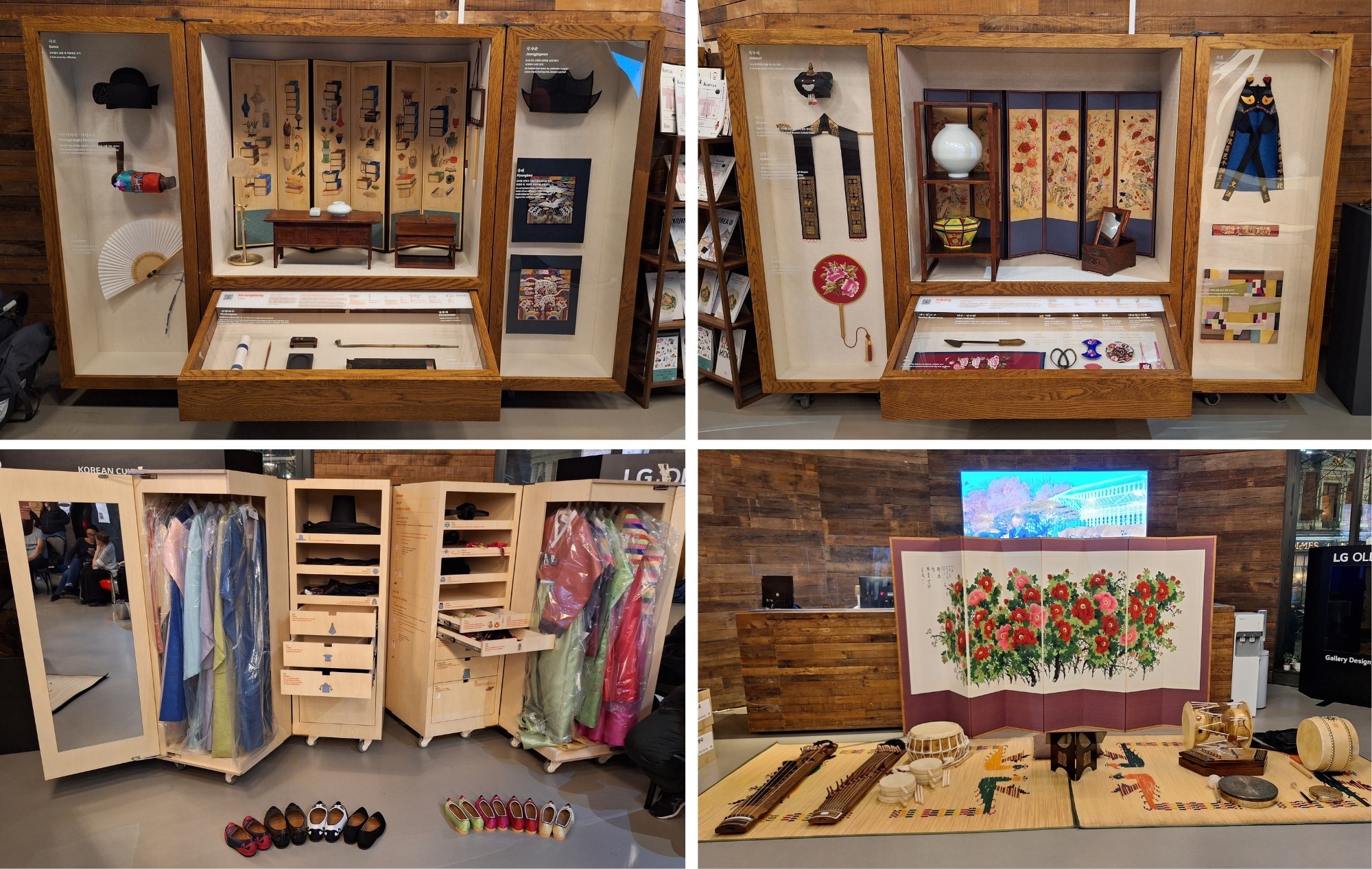
After the lectures, we were free to try on hanboks: there was a separate dressing ‘box’ for women and men. The most amazing thing about this was the wide selection of accessories for both the women and men dress-up. It has been quite the norm already to see a variety of hanboks but this has been the most vibrant selection of headwear, pouches, norigaes (ornamental pendants) and, most excitedly, shoes(!) I have ever seen in London so far!
Everyone got really enthusiastic while selecting their outfits and accessories – and as there was quite a wide range of male hanboks, they seemed even more popular than the female ones.
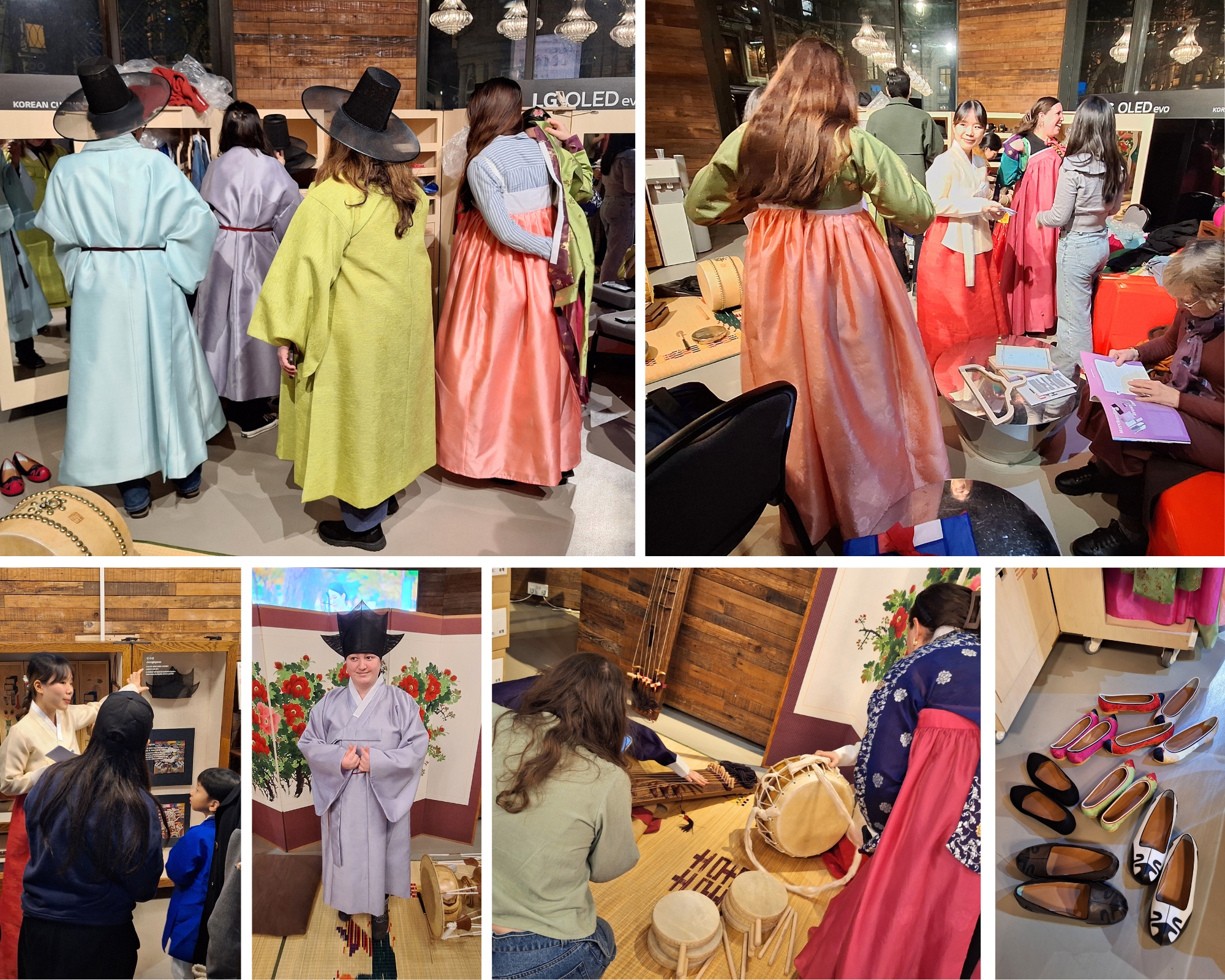
After the hanbok trial, the next event was an introduction of Korean traditional musical instruments: janguu (double-headed hourglass-shaped drum), sogo (small hand-held drum), buk (barrel drum), geomungo or hyeongeum (fretted bass zither played with a bamboo stick) and gayageum (long zither), kkwaenggwari (small gong) and jing (large gong). Each instrument was briefly described and we were lucky as our host of the evening also presented how to play on them. It was an important part, as we were allowed to try each instrument so this demonstration was very helpful.
Right after this, our host played some pieces on the haegeum, which is a traditional Korean string instrument, similar to a fiddle; it’s played vertically. If you are a fan of Suga or Agust D of the Korean boy band sensation BTS, you must be familiar with this instrument. The mini-concert flew us back in time to one of the Korean palaces.
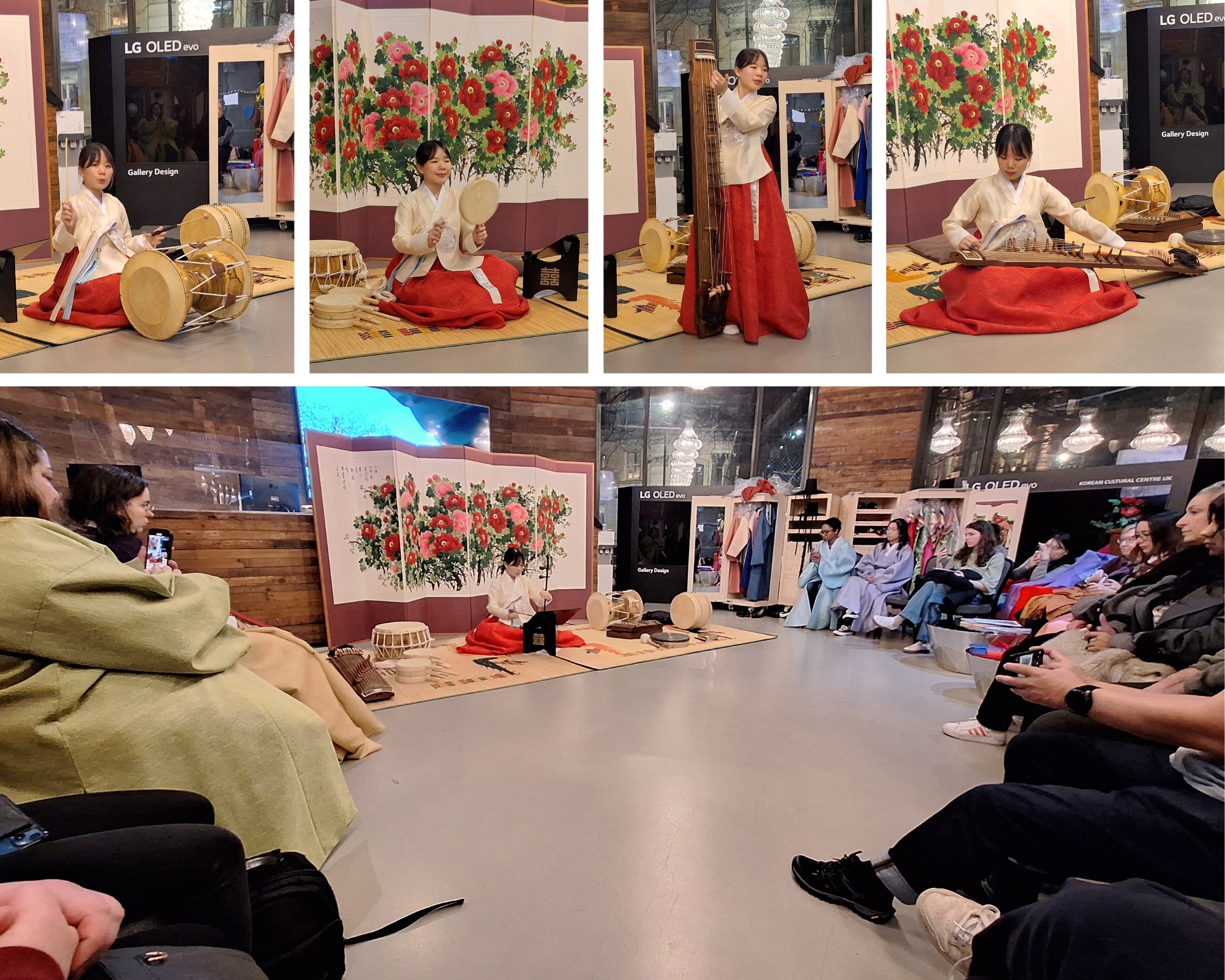
As I have already tried the female hanbok twice, this time I opted for a male hanbok, just like my sister, who joined me at the workshop. I was also fascinated by the selection of the headwear, therefore, I tried to try on as many as possible. It was so much fun! I have taken the opportunity and posed with some of the musical instruments while wearing the beautiful traditional outfits. Although I cannot play any instruments, the drums and percussions, gongs allowed me to thoroughly enjoy the event.
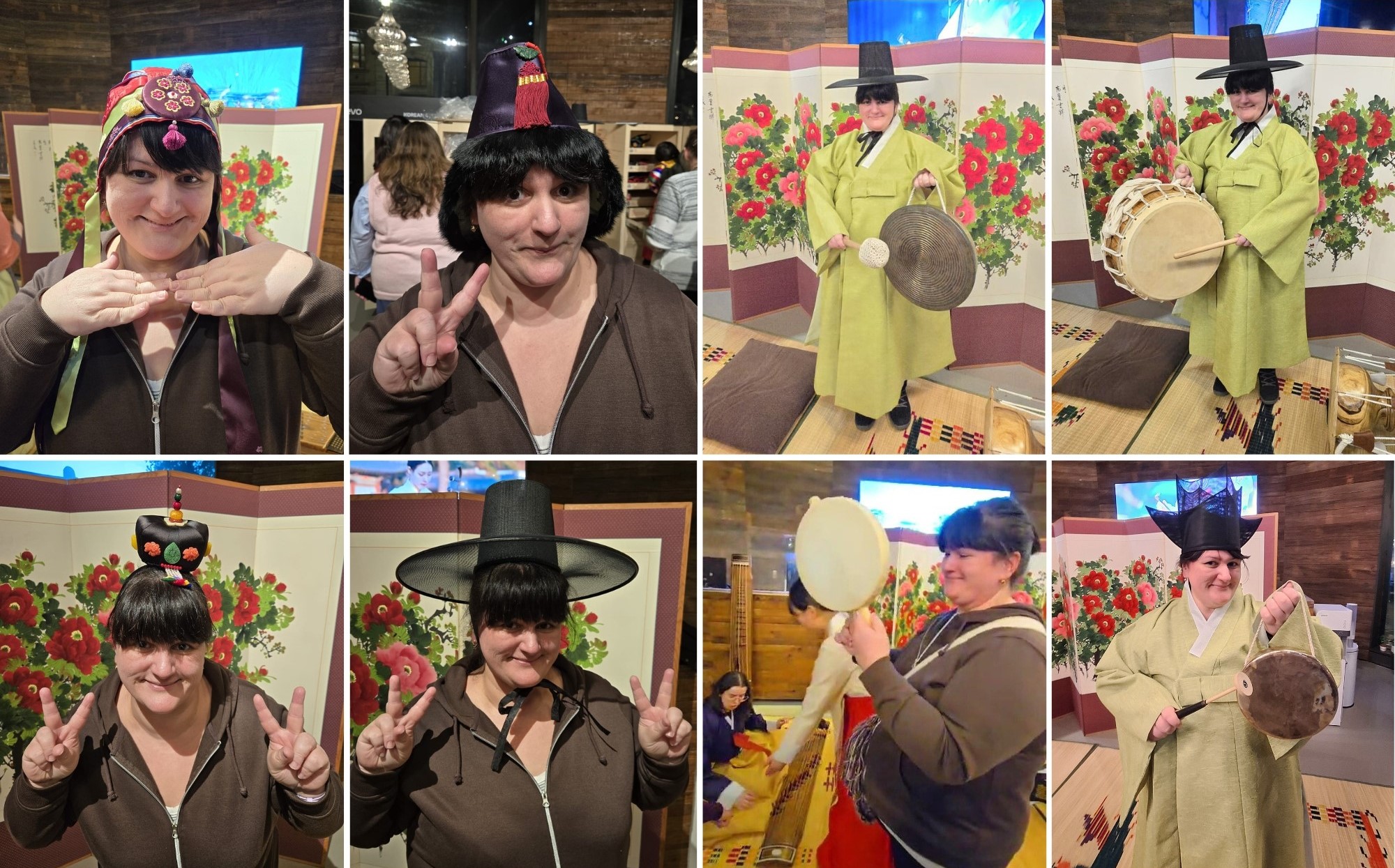
Downstairs were two other displays: one on some basic information and geological location of Korea and another one focusing on Hangeul, the Korean alphabet. The latter was entertaining and educational at the same time. Some basic and popular phrases were written in Hangeul, also displayed in romanized transcription for pronunciation with their English translations. From the two little side drawers of the displays, we could collect cards with the displayed expressions printed on them so that we could practise Hangeul while tracing the printouts.
The expression “Saehae bok mani badeuseyo." (새해 복 많이 받으세요.) - “Happy new year!” in English, I am sure, was the one that everyone has learned by the end of the event.
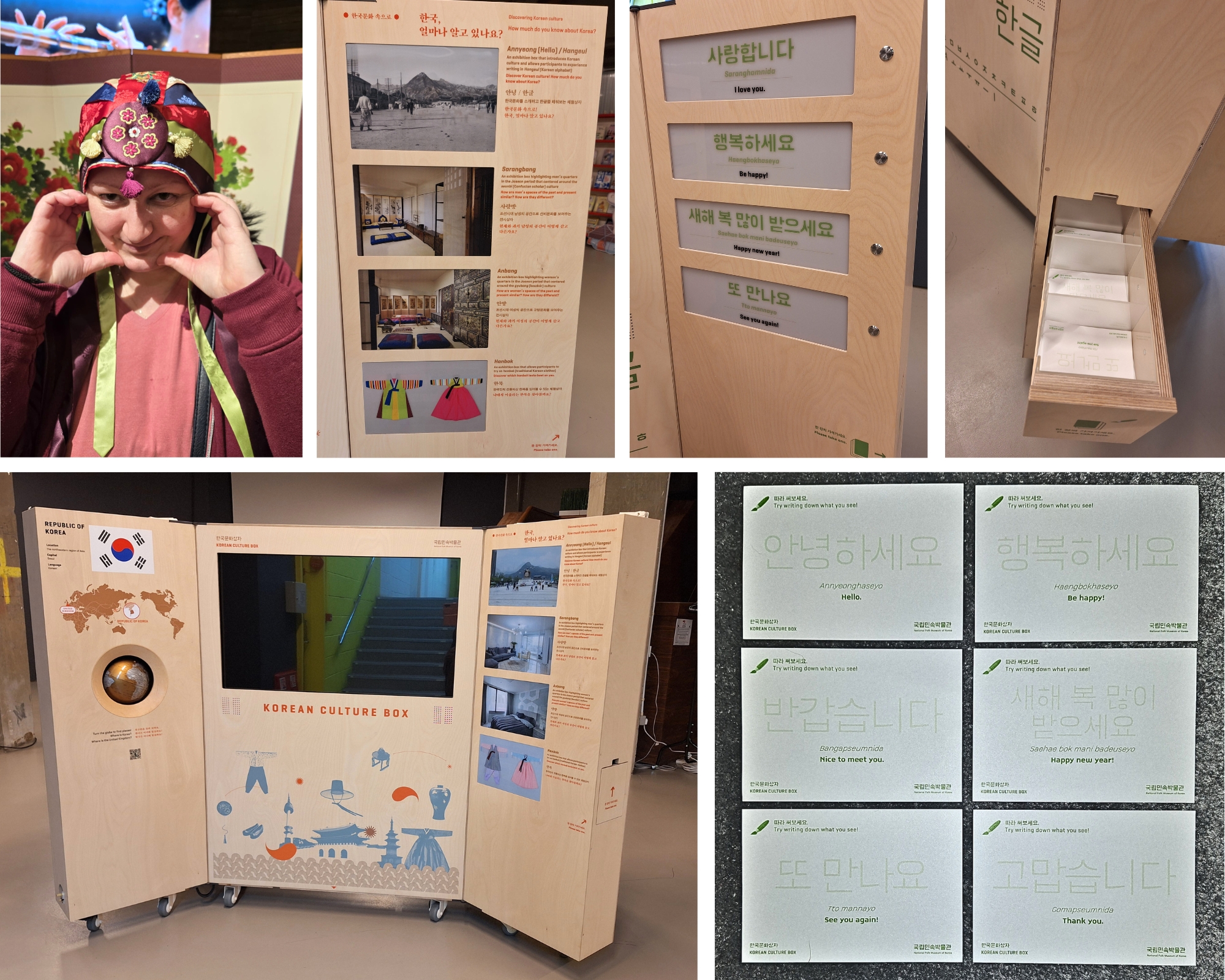
To crown the event, each participant has received an amazing gift from the organisers. Wrapped in a special version of bojagi, a traditional Korean wrapping cloth, a beautiful publication commemorating the event was prepared for us. The elegant outer box – true to the name of the event – contained a booklet introducing Korea and the segments of the workshop, a card set describing each exhibited item and more, and a USB stick that can be activated online allowing to have more information of the cultural content.
I will definitely cherish this outstandingly high-quality publication and keep learning more about Korean culture with it. With the cards I will never forget how much we have learnt and how much fun we had during the event.
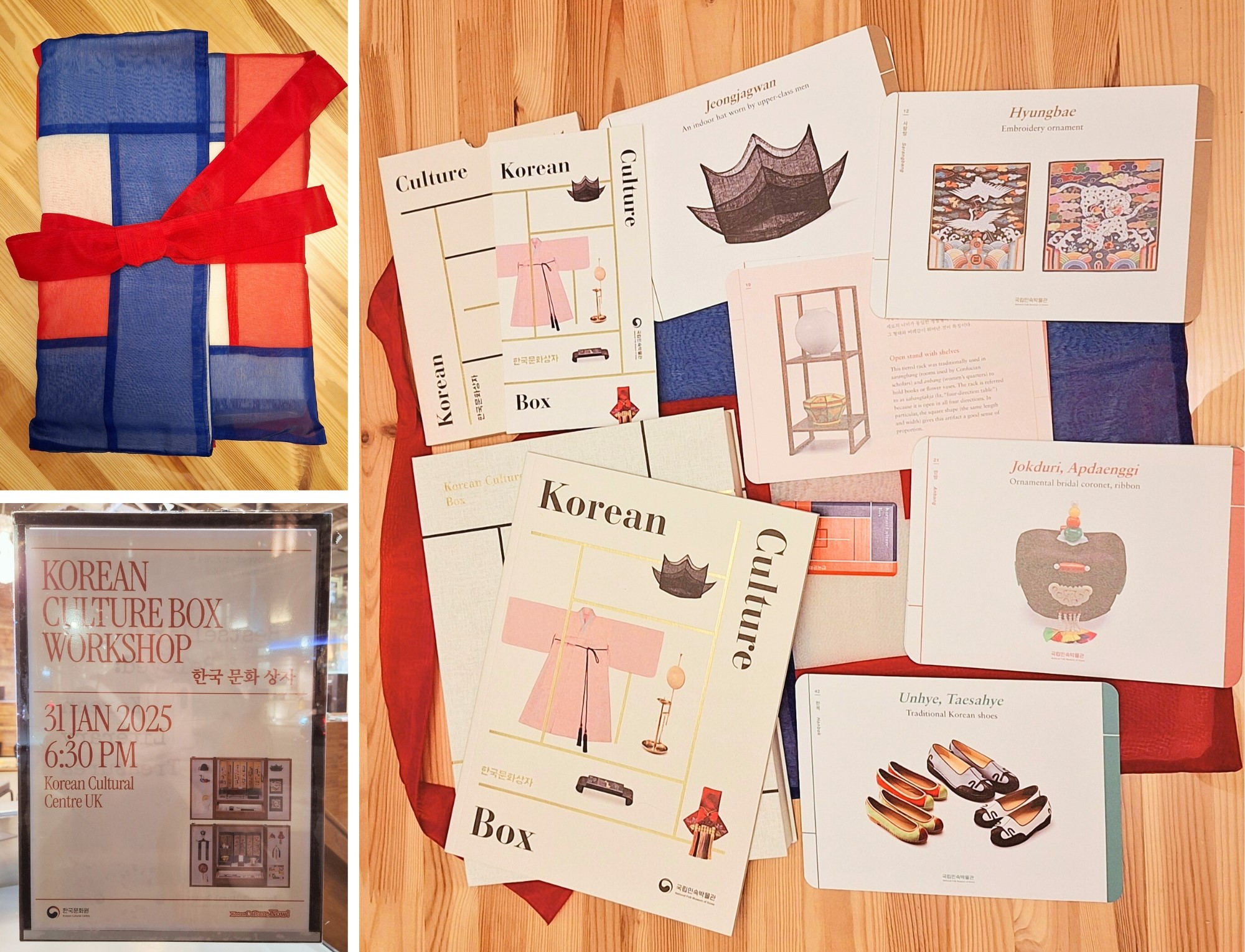
While leaving for home, the expression “Tto mannayo" (또 만나요.) “See you again!” was the most fitting. I look forward to the next event and would like to thank everyone at KCC London who was involved in the organisation and delivery of this wonderful and informative evening that brought Korean culture enthusiast together.
How about this article?
- Like2
- Support0
- Amazing3
- Sad0
- Curious0
- Insightful0


